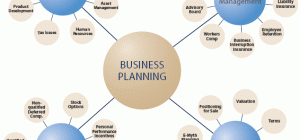 While it might sound like an over exaggeration, warehouses can be some of the most dangerous working environments there are.
While it might sound like an over exaggeration, warehouses can be some of the most dangerous working environments there are.
Some warehouses, such as those owned by online retail giant Amazon, span vast expanses - around the size of nine football pitches - and are jam-packed full of shelves and workers. They ship millions of parcels a year and the warehouses never sleep. In bustling environments like this, which are also home to a multitude of heavy goods machinery, it's not hard to envisage where danger may lie.
However, it's only because of careful planning, thorough training and a barrage of safe-working practices, that these warehouses are indeed a safe place to work.
Safety to scale
Even small warehouses owned by small mailing firms, food processing plants, or otherwise, can also learn to employ safer working practices - as best demonstrated by market leaders like Amazon.
Of course, while it cannot necessarily be expected that businesses who operate on this scale have access to dedicated safety-officers, or masses amounts of money to invest in warehouse safety, it doesn't mean that they can shy away from their responsibilities to promote a safe working environment.
Why play the safety game at all?
As well as avoiding the risk of falling foul of bodies like the UK's Health and Safety Executive (HSE) - who could, in a heartbeat - should down an unsafe operation, employers have numerous benefits to remain safe.
Maintaining a productive workforce, with higher levels of employee satisfaction and lesser instances of absenteeism, is just one benefit. Reducing the amount of damage to warehouse stock and inventory, or minimizing the risk of loss of equipment is another.
General guidance
With or without a qualified safety professional, warehouse managers should still adhere to a number of simple rules that will have an immediate impact on the working environment around them.
A place for everything, everything in its place.
Perhaps one of the most important (and easiest steps) to implement in a warehouse environment is keeping you house in order in terms of storage.
This could mean anything from where forklift trucks, or other heavy-duty carrying machines, should be stowed when not in use, to having a space for tools, and a designated location for rubbish.
This action will ensure that inventory doesn't go astray and that a clean working environment is promoted, where there shouldn't be miscellaneous junk lying around on the floors and surfaces.
See no evil, hear no evil, speak no evil
It isn't acceptable for workers to remain silent, should they come across potential hazards in the workplace. Every individual in the organization should be able to point out where they feel improvements can be made, such as adding stair nosings to sharp stairs or installing anti-slip flooring in wet environments. There should be a formalized process for the recording, investigating and actioning of this information.
Be seen AND be heard
Both managers and workers should be aware of the duty at hand and therefore responsible for ensuring they stick to this task. This is important so managers know where their employees are at all times, safe in the knowledge that they are the right person for the job.
Workers should also be wary to make their physical presence to others known, particularly when operating machinery. This can be done by having visual and audible warnings from machinery - and also by individuals wearing high-vis safety vests and helmets, as necessary.
Chris Taylor is a brand journalist who writes this article on behalf of workplace safety and anti-slip flooring specialist FibreGrid.





![Awesome Things You Need in Your Office [According to Officeprinciples.com]](https://lerablog.org/wp-content/plugins/wp-thumbie/timthumb.php?src=http://lerablog.org/wp-content/uploads/2014/10/image1-300x199.jpeg&w=300&h=140&zc=1)

